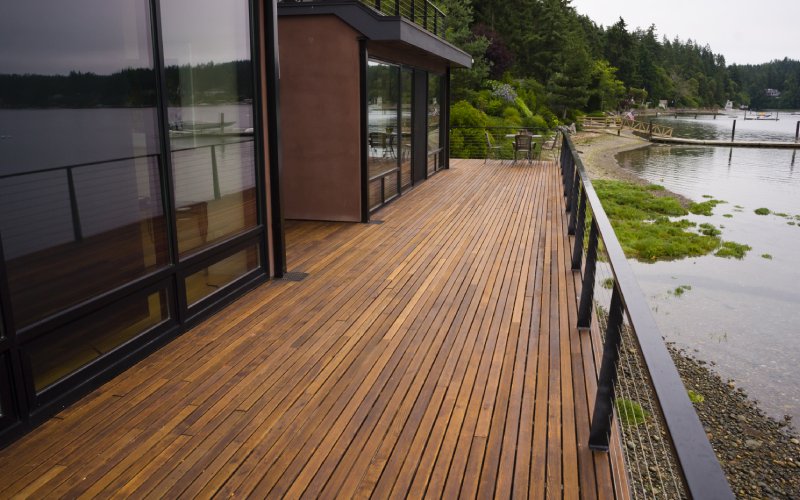As outdoor entertainment and do-it-yourself home improvement projects have become more affordable and efficient, more and more plans and materials have become available for homemade deck building. From purchasing a deck product that can be assembled quickly to mapping out and designing your own plan, deck building has never been easier.
Follow these guidelines to create a safe, comfortable, and inviting outdoor space.
1. When you think “deck,” think “room”
The first thing to think about when you’re designing a deck is what you’re going to use it for so that you can size the space accordingly. Will your deck function as a kitchen, an outdoor living room, an outdoor dining room, or some combination of those options? If you want the new deck to be an outdoor dining room, take a look at your indoor dining room, and see how you can duplicate the dimensions outside. If you’re lucky enough to be able to build a deck with multiple levels, you can place individual functions on each level. Generally, three risers is enough of a change in elevation to separate different levels. Fewer risers than that can be hard to differentiate and also can create a trip hazard. Separate the levels with planters and with built-in benches. They add color and offer a place where you can sit and socialize.
2. Leave some room to move around
While you’re planning the size of your deck, its uses, and the furniture you’ll put on it, remember also to think about how traffic will move across the deck to another destination, whether it’s into the house or into the yard. Don’t put the path between the table and the chairs, or between the grill and the benches. It seems an obvious thing to point out, but we see this problem over and over again. It shouldn’t be an afterthought.
3. Control the sun
When designing a deck, think about how you’re going to deal with the sun and how best to moderate it.
One good idea is a trellis. By casting nice shadows on the deck, a trellis protects you from the sun, and it’s also a pleasant structure to look at. If your deck is attached to the house, you can add a shed roof, which not only gets you out of the sun but also gives you a sense of shelter. Even a penalty-box deck can be made more comfortable with a bit of a shed roof over it.
4. Use railings for safety and sociability
I always recommend railings, even on a low deck. They may not be required by code, but they’re still a good idea. Where I lived in Connecticut, the code height for railings was 30 in. If your deck was higher than 30 in. from the ground, you had to have a railing; if it was less than that, you didn’t.
Here’s the problem with that rule: People hang around on decks in the evening, and sometimes they might even have a margarita. Sometimes they get too close to the edge. If they do, 30-in. is a long way to fall.
5. Make wind work for you
Wind is another natural element worth considering when you plan a deck. Depending on the conditions where you build your deck and the general climate, you might want to block the wind, or you might want to gather it to create a pleasant breeze. Prevailing breezes can be funneled toward an outdoor space by the configuration of fences, so if you want to take advantage of a breeze, build a funnel. On the other hand, if you have a great view but there’s a prevailing wind in your face that makes it uncomfortable to be on the deck, consider a glass railing. The wind will hit that and bounce over the top.
6. Review codes before it’s too late
Decks are subject to building codes just like any construction project. Although many codes are standard, others vary from region to region. If you want to avoid headaches later, educate yourself on the codes that apply in your area before you design your deck.

